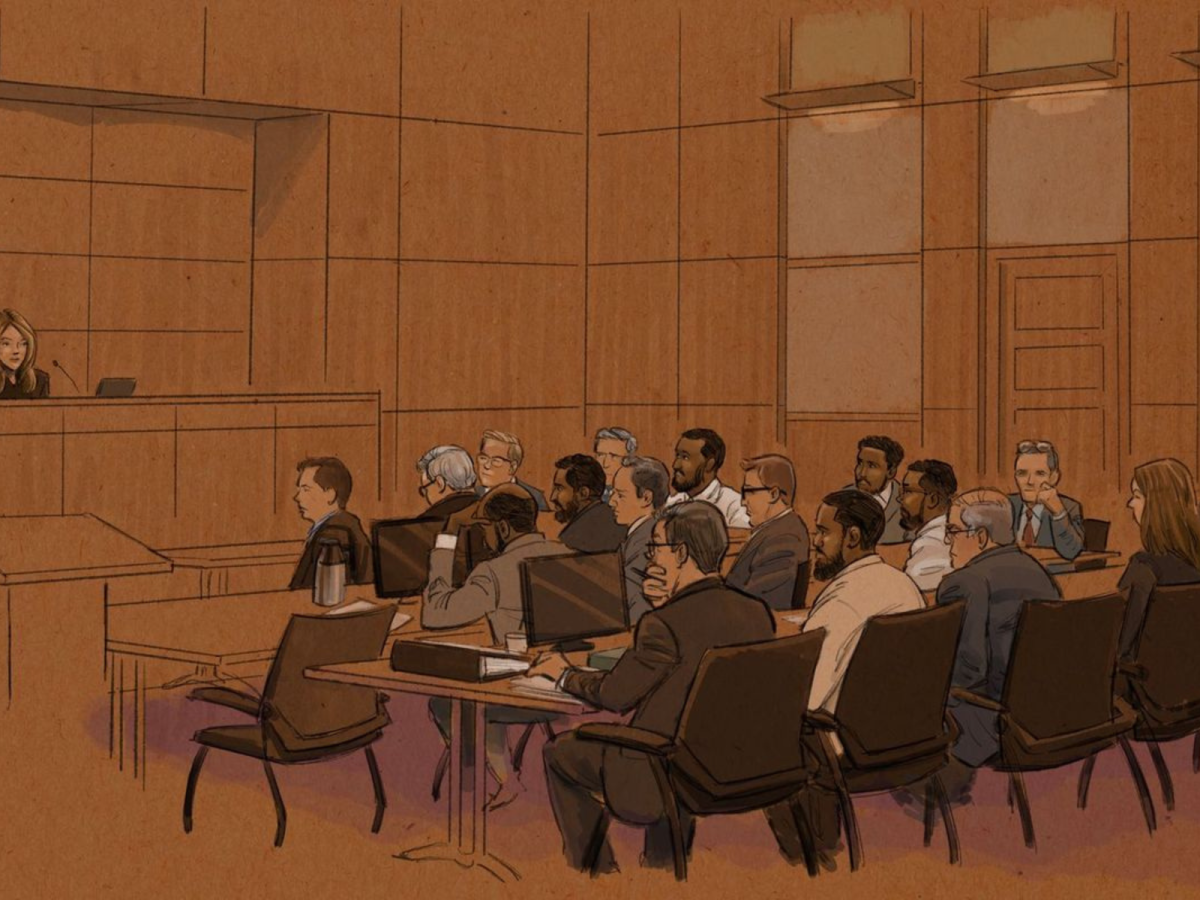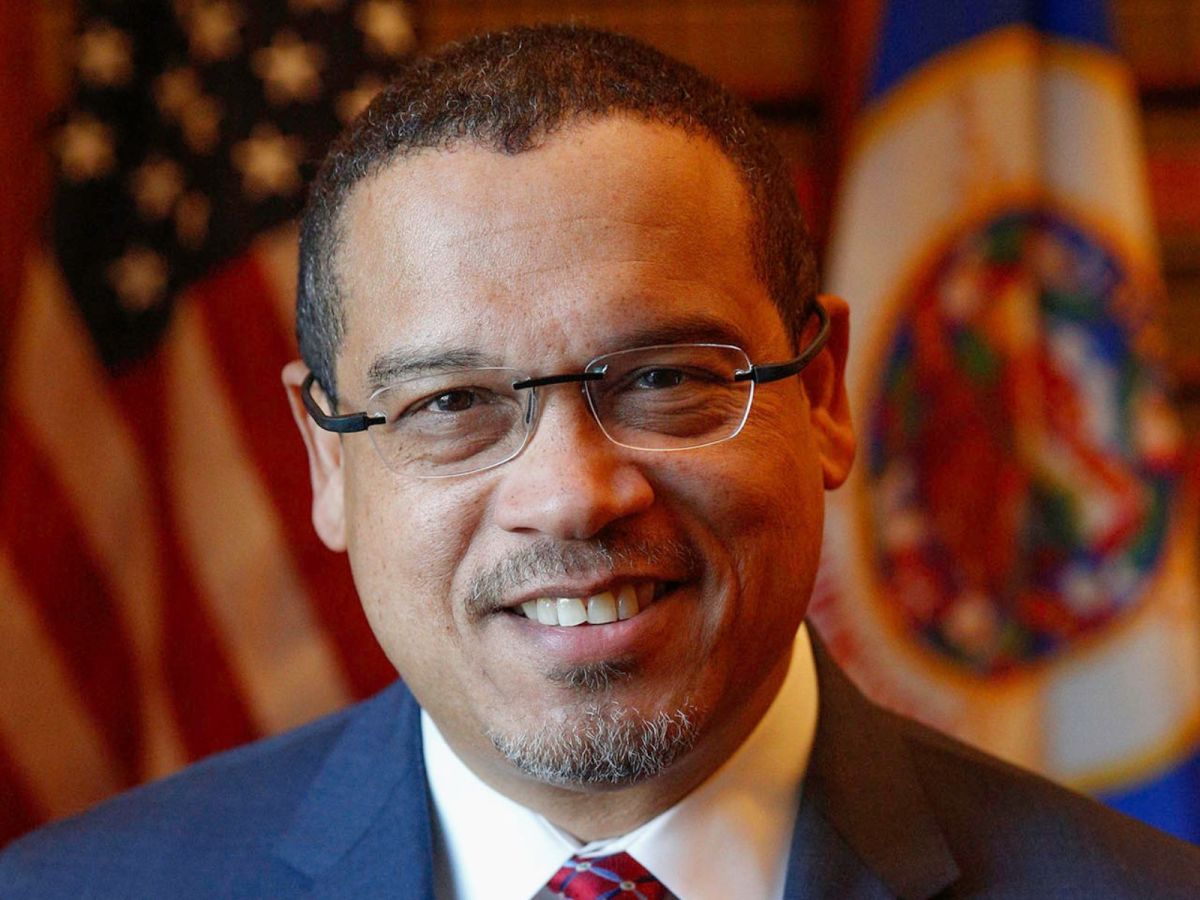Standing in the same former bean field he played in as a child, Prairie Island Indian Community President Johnny Johnson recently led a crowd of project partners and community members in celebrating progress on the tribe’s net zero carbon project.
More than two years after its inception, the project features an almost complete solar field, in-the-works geothermal energy wells, and plans to reduce energy consumption and costs for Prairie Island residents.
“It was a long and worthwhile journey,” Johnson said. “Our path to net zero is a transformational opportunity, not just for the Prairie Island Community, but for any community that is trying to reduce its impact on the environment.”

Prairie island first contacted legislators in 2018 to get support for the project, Johnson said. It wasn’t until two years later in 2020 that Governor Tim Walz signed legislation greenlighting the project.
The Prairie Island Indian Community reservation, which lies along the Mississippi and Vermillion rivers in and adjacent to Red Wing in southeastern Minnesota, is home to descendants of the Mdewakanton Band of Eastern Dakota.
Johnson’s family had no electricity or running water until 1968, when the federal government built 12 homes in the community. Tribal members now live in about 150 homes. The reservation operates the Treasure Island Casino, which has operated since the 1980s.
As the community has grown, so has the need for energy. Now built atop what was once an unused pile of sand dredged from the Mississippi is a mostly complete 5.4-megawatt field of solar panels that Prairie Island leaders hope will be a step toward what they call “energy sovereignty.”
The solar field is not currently in operation; it’s expected to be up and running in early 2024.
Energy has long been a topic of conversation for Prairie Island’s community, which sits in the shadow of one of Minnesota’s two nuclear power plants. In 1973, the federal government authorized construction of the facility less than a mile from the reservation.
Over the years, many Prairie Island tribal members have voiced dismay that the plant and nuclear waste storage are so close to their reservation. In March, Xcel Energy agreed to increase its annual payment to the community from $2.5 million to $10 million to compensate it for storing spent nuclear waste near its land.

Plans for the future
Knobelsdorff, an industrial electrical contractor, partnered with Prairie Island to install the solar field, according to its CEO, Karl von Knobelsdorff.
Construction of the geothermal plant and wells included in the project’s plans is still in its early stages, with drilling having only recently begun near the solar field. Prairie Island and its partners expect it to be completed in 2025.
Geothermal wells use temperatures underground, which remain relatively consistent, to heat or cool buildings depending on the season.
Another key part of the net zero carbon project highlighted Thursday by Prairie Island leaders is the Residential Energy Upgrade Program. There are hopes it will reduce both energy consumption and costs for residents by upgrading insulation and converting heating systems and stoves to electricity.
Five tribal members worked on installing the solar field. They were excited about learning to work with solar energy, Johnson said.
“Each and every one of them said they either wanted to continue working on a project similar to this, or just be more involved in the solar project here,” he said.
Solar Bear, a Native American-owned solar installation company based in Minneapolis, worked with Knobelsdorff to create a program to train Prairie Island tribal members to work on the project.
Von Knobelsdorff said three of the tribal members who have been working on the project will stay on as full-time employees.
Tribal members get involved
Five years ago, before the net zero project had even gained traction, Prairie Island resident Tina Jefferson installed solar panels on her roof to power lights all around her yard.
“My grandkids think I’m crazy—‘Grandma, you’ve got all these lights everywhere!’” Jefferson said. “Well, I don’t have to pay for electricity—it’s free!”

Although her house isn’t fully powered by solar, it’s a step toward what she sees as the future for herself and her community.
Jefferson participated in “Intro to Solar” classes Prairie Island offered community members, then went on to help build the solar array in the field.
“Part of the reason why I joined this project is because I wanted to express that we as individuals want that in our homes,” Jefferson said. “We want to be off the grid as much as possible.”
Jefferson hopes Prairie Island’s project will inspire other tribal communities in Minnesota to take on similar projects.
“I know several community members there [Shakopee Mdewakanton Sioux Community], and they’ve talked about watching what we’re doing,” she said.






